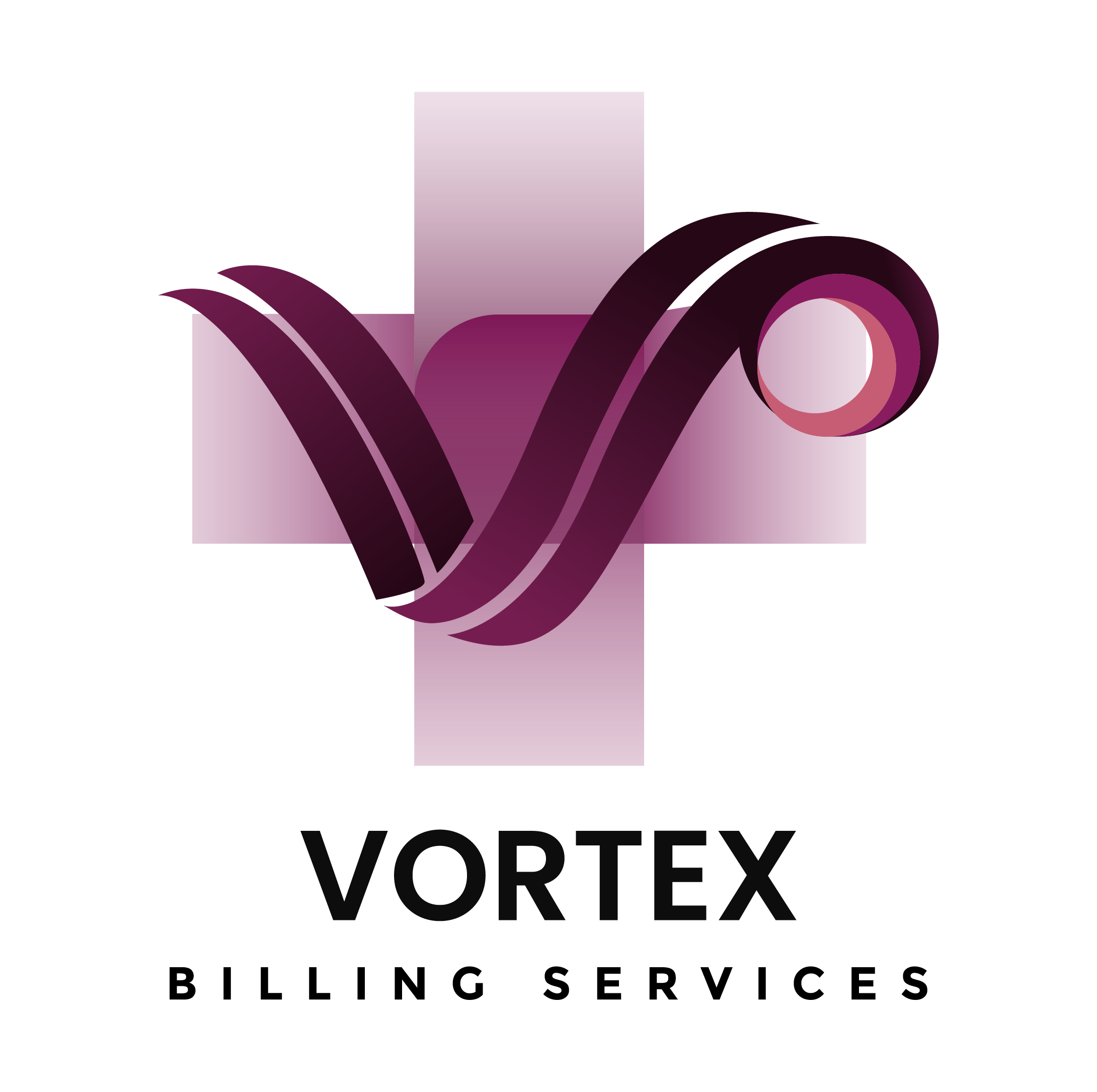Mastering Denial Management: A Cornerstone of Healthcare Revenue Cycle Success
In today’s complex healthcare environment, denial management is more than just a back-office function—it’s a vital part of ensuring steady revenue flow and financial sustainability. For U.S.-based medical practices, clinics, and healthcare providers, mastering denial management can mean the difference between a thriving operation and a struggling one. So, how does denial management fit into the revenue cycle process? It integrates seamlessly across every stage, helping you reduce errors, recover lost revenue, and create a more efficient billing system. From the moment a patient checks in to the time a claim is paid, denial management should be front and center.
Understanding Denial Management
What is Denial Management in Healthcare?
Denial management in healthcare is the process of identifying, analyzing, and resolving claim denials from insurance companies. These denials are often caused by simple mistakes like missing information, incorrect coding, or eligibility issues. However, if left unchecked, they can snowball into significant financial losses for a practice. Denial management aims to stop that from happening. It’s not just about fixing what went wrong—it’s about creating a strategy to prevent denials in the first place. This includes monitoring key denial trends, training staff, leveraging technology, and refining the billing workflow.
In practical terms, denial management involves tracking each denied claim, finding the root cause, and appealing or correcting the claim promptly. It also means keeping a close eye on payer-specific rules and requirements. Because every payer—from Medicare to private insurance companies—has different criteria, staying compliant is a constant challenge. But with a focused denial management strategy, healthcare providers can stay ahead of those rules and ensure smoother claim processing.
Practices that implement strong denial management processes often see faster reimbursements, fewer write-offs, and better relationships with payers. It’s one of the unsung heroes of revenue cycle management, and yet, it plays a starring role in keeping the financial health of your organization intact.
Common Reasons for Claim Denials
Understanding why claims are denied is step one in creating an effective denial management process. The top reasons include:
- Incomplete or inaccurate patient information: Misspellings, wrong dates of birth, or missing insurance IDs can result in a quick denial.
- Coding errors: Using the wrong diagnosis or procedure codes is one of the most common causes of denials.
- Eligibility issues: Submitting claims for services not covered by a patient’s plan, or for a patient not eligible on the date of service, triggers automatic denials.
- Timely filing: Every insurer has a deadline for when claims must be submitted. Missing that deadline? Denied.
- Authorization and referral failures: Some services require pre-authorization. Without it, claims can be instantly rejected.
This list highlights why denial management is crucial—not just for correcting these issues, but for preventing them altogether. Each denial type reveals a potential weakness in your billing or front-desk process, and understanding these patterns helps plug the leaks before they sink the ship.
The True Cost of Ignoring Denials
It’s tempting to ignore a denial here and there, especially when you’re dealing with a high volume of claims. But over time, even small write-offs add up. Industry estimates suggest that nearly 30% of medical claims are denied, and 60% of those are never resubmitted. That’s a massive chunk of revenue left on the table.
Ignoring denials doesn’t just hurt your cash flow—it sends a signal to payers that they can reject claims without pushback. It also increases administrative costs. Every denial requires time and effort to research, refile, or appeal. Without a denial management process in place, that time doubles, and your staff burns out while revenue slips through the cracks.
In more extreme cases, chronic denial issues can lead to compliance problems, audits, and even legal trouble—especially if they stem from improper coding or billing practices. That’s why denial management isn’t just about dollars and cents—it’s about running a compliant, professional, and patient-focused practice.
The Revenue Cycle Process in Medical Practices
Key Stages in the Revenue Cycle
Before diving into how denial management fits in, it’s essential to understand the broader revenue cycle. The typical revenue cycle in a U.S. medical practice includes:
- Patient Scheduling and Registration: Where basic info and insurance details are collected.
- Eligibility and Benefits Verification: Ensures the patient’s insurance covers the planned services.
- Charge Capture: Records all services rendered.
- Coding and Billing: Converts services into standardized codes and prepares claims.
- Claim Submission: Sends the claim to the payer for reimbursement.
- Payment Posting: Applies received payments to patient accounts.
- Denial Management and Appeals: Identifies denied claims and resubmits them.
- Patient Collections: Handles any remaining balance not covered by insurance.
Every one of these stages is vulnerable to errors that can lead to denials. That’s where denial management becomes an essential tool—not just for fixing issues at the end but for building stronger practices at the beginning.
How Denial Management Integrates Into Each Stage
Denial management isn’t just an afterthought in the revenue cycle—it should be baked into every stage:
- At registration, verifying insurance coverage and patient data can prevent basic errors.
- During coding, using tools to flag incorrect or outdated codes avoids unnecessary rejections.
- When submitting claims, reviewing them against payer rules ensures that errors are caught before submission.
- Post-submission, denial tracking systems can quickly identify trends, flag recurring issues, and trigger staff training.
When integrated properly, denial management acts as both a shield and a sword. It protects your practice from financial harm and equips your team with the tools to fight back when denials happen.
Workflow Optimization Through Proactive Denial Handling
Let’s face it—no one likes dealing with denials. They slow down payments, frustrate staff, and confuse patients. But proactive denial management turns this pain point into a performance booster.
This means setting up clear workflows: Who handles denials? How quickly are they reviewed? Are they categorized by payer, service type, or denial reason? Do you have templates for appeals?
Automation plays a huge role here. Modern RCM tools can assign denials to specific team members, generate appeal letters automatically, and prioritize high-value claims. Proactive denial handling also includes scheduling regular audits, cross-department collaboration, and feedback loops so that lessons learned from one denial can prevent future ones.
Proactive management turns denial resolution from a stressful task into a strategic advantage. The more you refine this process, the more predictable your revenue becomes.
Why Denial Management Is Critical to Financial Health
Direct Impact on Cash Flow
For medical practices, clinics, and healthcare providers, cash flow is king. Delays in payment or claim rejections directly affect your ability to cover payroll, purchase medical supplies, and reinvest in your practice. That’s where denial management steps in—by reducing claim denials and accelerating reimbursements, it ensures a healthier, more predictable cash flow.
When claims are denied, payments are delayed for weeks—or even months—while staff scramble to resolve the issue. Denial management shortens this cycle. A robust denial management process quickly identifies errors, refiles claims efficiently, and speeds up resolution. This reduces accounts receivable (A/R) aging and increases your revenue collection rate.
Even a 1% reduction in denied claims can result in tens of thousands of dollars in reclaimed revenue annually, depending on your patient volume and payer mix. With the right denial management practices, clinics in the USA can turn what used to be lost income into bankable revenue, helping them grow and scale with confidence.
Influence on Patient Satisfaction and Trust
You might not realize it, but denial management also plays a big role in how patients perceive your practice. Nothing frustrates a patient more than receiving a surprise bill because their claim was denied. This creates distrust—not just in the billing team but in the entire healthcare experience.
By minimizing billing errors and denials, you deliver a smoother, more transparent experience for patients. When patients trust that their insurance claims will be handled correctly, they’re more likely to return, refer others, and pay their balances promptly.
Clear, upfront communication about coverage, costs, and billing procedures—enabled by effective denial management—helps reduce confusion. And when denials do happen, prompt follow-up and professional handling reassure patients that you’re on top of it. This is crucial in a marketplace where competition is fierce and patient retention is vital.
In short, denial management is not just a financial tool—it’s a customer service strategy. It shows your patients that your practice is organized, professional, and committed to providing high-quality care and transparency.
Long-Term Cost Savings Through Efficient Denial Management
Many practices view denial management as a cost center, but that’s a huge mistake. When done right, it can actually lower your overall operational costs. Here’s how:
- Reduces administrative burden: Instead of reworking claims, your team spends less time fixing mistakes and more time serving patients.
- Prevents write-offs: By recovering revenue that would otherwise be lost, denial management adds real dollars to your bottom line.
- Improves payer negotiations: With solid denial data, you can better advocate for fair reimbursement rates during contract discussions.
- Supports value-based care: In a healthcare system shifting toward outcomes and efficiency, clean billing is essential. Denial management helps you track patterns that can affect overall care delivery and documentation.
When you adopt a strategic approach to denial management, you’re not just fixing today’s problems—you’re preventing tomorrow’s. Over time, this reduces the need for large billing departments, decreases stress on your staff, and supports a leaner, more profitable practice.
Denial Management Strategies That Work
Real-Time Eligibility Verification
One of the simplest and most powerful denial management strategies is real-time insurance eligibility verification. Before a patient ever steps into the exam room, your staff should confirm that their insurance is active, covers the intended services, and doesn’t have restrictions that could trigger a denial.
Many denials are caused by eligibility issues that could have been easily prevented at check-in. Verifying this information in advance cuts off the problem before it starts. Today’s technology makes this process lightning-fast. Practice management software can integrate with payer systems and check coverage in seconds, reducing front-desk workload and improving accuracy.
For new or expanding practices in the USA, especially those embracing tech-driven solutions, real-time eligibility tools are a must-have. They save time, reduce denials, and boost patient confidence.
And remember—eligibility checks shouldn’t be a one-time thing. Patient insurance can change monthly. Make real-time checks a routine part of every visit, and you’ll see a noticeable drop in eligibility-related denials.
Comprehensive Staff Training and Documentation
Technology can only take you so far if your staff isn’t properly trained. Comprehensive training and documentation are key to effective denial management. Everyone involved in the revenue cycle—from front-desk receptionists to coders and billers—needs to understand how their work affects claim success.
Start by establishing clear documentation protocols. This includes standardized forms, accurate charting, and timely input of clinical data. Make sure staff understands the importance of accurate CPT and ICD-10 coding. Invest in annual coding certification updates and denial trend training.
Create a culture of accountability. Every team member should understand the role they play in revenue protection. Use regular team meetings to review common denial reasons and discuss real cases. Celebrate improvements and highlight areas for growth.
Also, build a comprehensive knowledge base or SOP manual that staff can reference. Having written procedures ensures consistency and minimizes the learning curve for new hires. Properly trained staff means fewer denials, less rework, and more collected revenue—plain and simple.
Use of Technology and Automation
Manual denial tracking is inefficient and prone to errors. That’s why leveraging technology and automation is a game-changer in denial management. The right RCM (Revenue Cycle Management) software can automatically detect, categorize, and escalate denials for faster resolution.
Some of the most effective tools include:
- Denial dashboards: Visualize denial rates by payer, procedure, or provider to uncover patterns.
- Automated alerts: Get real-time notifications for claim issues, helping your team act fast.
- Appeal templates: Pre-loaded appeal letters and documentation shortcuts save time and reduce response errors.
- Batch reprocessing: Allows teams to resubmit multiple corrected claims at once, rather than one by one.
Tech-forward practices in the U.S. are turning to AI-based platforms that use machine learning to predict denials before submission. These systems flag high-risk claims, allowing staff to review and fix them before they’re sent. Over time, this predictive denial management becomes smarter, improving success rates across the board.
Automation doesn’t replace your staff—it supercharges them. It lets them focus on high-value tasks while the system handles the grunt work. The result? A more efficient, compliant, and profitable revenue cycle.
Leveraging Technology for Smarter Denial Management
AI and Machine Learning in Denial Prediction
Artificial Intelligence (AI) and machine learning are no longer futuristic buzzwords—they’re the backbone of modern denial management. These advanced tools are revolutionizing how healthcare providers in the U.S. predict, prevent, and process claim denials. By analyzing massive datasets from historical claims, AI algorithms can identify patterns that human eyes would miss.
For instance, AI can flag claims that are likely to be denied based on factors like payer behavior, documentation gaps, or coding combinations. It learns over time, improving its accuracy and helping practices avoid repeat mistakes. This means less manual auditing, fewer appeals, and significantly higher first-pass resolution rates.
Machine learning also supports better decision-making. If a certain payer consistently denies a particular CPT code without specific documentation, the system can alert your staff before submission. It’s like having a billing expert watching your back 24/7.
These tools aren’t just for large hospitals. Many RCM platforms now offer AI-driven features designed for small to mid-sized clinics. If your practice wants to stay competitive, AI should be part of your denial management strategy.
Dashboards and Analytics for Insights
You can’t fix what you can’t see—and that’s where denial analytics come in. Denial management is data-driven by nature, and using dashboards and analytics gives your team the visibility they need to act fast and smart.
The best analytics tools break down denials by:
- Payer
- Service line or provider
- Denial reason
- Claim value
- Resolution timeline
Having this information at your fingertips lets you track performance trends, identify bottlenecks, and even hold payers accountable. You’ll know which denials are costing you the most and where training or process changes can have the biggest impact.
Interactive dashboards can also support staff accountability. For example, you can track how quickly team members resolve denials, how often claims are resubmitted, and what percentage of appeals are successful.
Some systems allow you to set KPIs (Key Performance Indicators) and monitor your progress in real time. This is critical for growing practices that want to optimize performance and reduce administrative overhead. Better insights lead to better decisions, and better decisions lead to fewer denials.
Selecting the Right RCM Partner for Denial Management
For many practices—especially new, growing, or tech-savvy ones—outsourcing denial management to a specialized RCM (Revenue Cycle Management) partner makes sense. But choosing the right partner isn’t about picking the lowest bidder—it’s about finding someone who understands your goals and can deliver results.
Here’s what to look for in a denial management partner:
- Transparency: You should always know what’s happening with your claims and revenue.
- Technology: Make sure they use AI, automation, and analytics to stay ahead of the curve.
- Compliance: They must follow HIPAA and all other regulatory guidelines to keep your data and practice safe.
- Customization: Your partner should tailor solutions to your specialty, patient base, and payer mix.
- Performance metrics: Ask for clear KPIs—what’s their denial resolution rate? Average days in A/R? Appeal success rate?
An experienced RCM partner will help you avoid denials altogether and recover lost revenue more efficiently when they happen. They’ll act as an extension of your team, not just a third-party service. For medical practices in the USA looking to grow, thrive, and simplify their billing, this kind of support can be a game-changer.
Conclusion: Fitting Denial Management Into Your Bigger Picture
Denial management is no longer just a post-claim task—it’s a proactive, integrated, and essential part of your entire revenue cycle process. From patient registration to final payment, managing and preventing denials touches every aspect of your operations. And for healthcare providers in the USA, especially those operating in competitive, tech-forward, or compliance-heavy environments, denial management is the key to long-term success.
By investing in real-time verification, training your team, automating workflows, and leveraging data analytics, you can reduce denials, accelerate cash flow, and boost patient satisfaction. Whether you’re a solo practitioner or a growing multi-site clinic, denial management fits into your revenue cycle like a lock into a key—it protects your revenue and opens the door to scalable growth.
As the industry continues to evolve with new payer models, increased regulations, and heightened patient expectations, those who prioritize denial management today will be better prepared for tomorrow.



